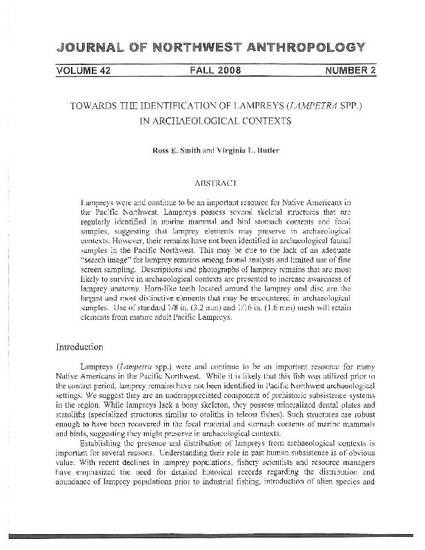
- Zoology -- Research,
- Environmental archaeology,
- Indians of North America
Lampreys were and continue to be an important resource for Native Americans in the Pacific Northwest. Lampreys possess several skeletal structures that are regularly identified in marine mammal and bird stomach contents and fecal samples, suggesting that lamprey elements may preserve in archaeological contexts. However, their remains have not been identified in archaeological faunal samples in the Pacific Northwest. This may be due to the lack of an adequate "search image" for lamprey remains among faunal analysts and limited use of line screen sampling. Descriptions and photographs of lamprey remains that are most likely to survive in archaeological contexts are presented to increase awareness of lamprey anatomy. Horn-like teeth located around the lamprey oral disc are the largest and most distinctive elements that may be encountered in archaeological samples. Use of standard 1/8 in. (3.2 mm) and 1/16 in. (1.6 mm) mesh will retain elements from mature adult Pacific Lampreys.

This is the publisher's final PDF. The article was originally published in the Journal of Northwest Anthropology and can be found online at: www.northwestanthropology.com